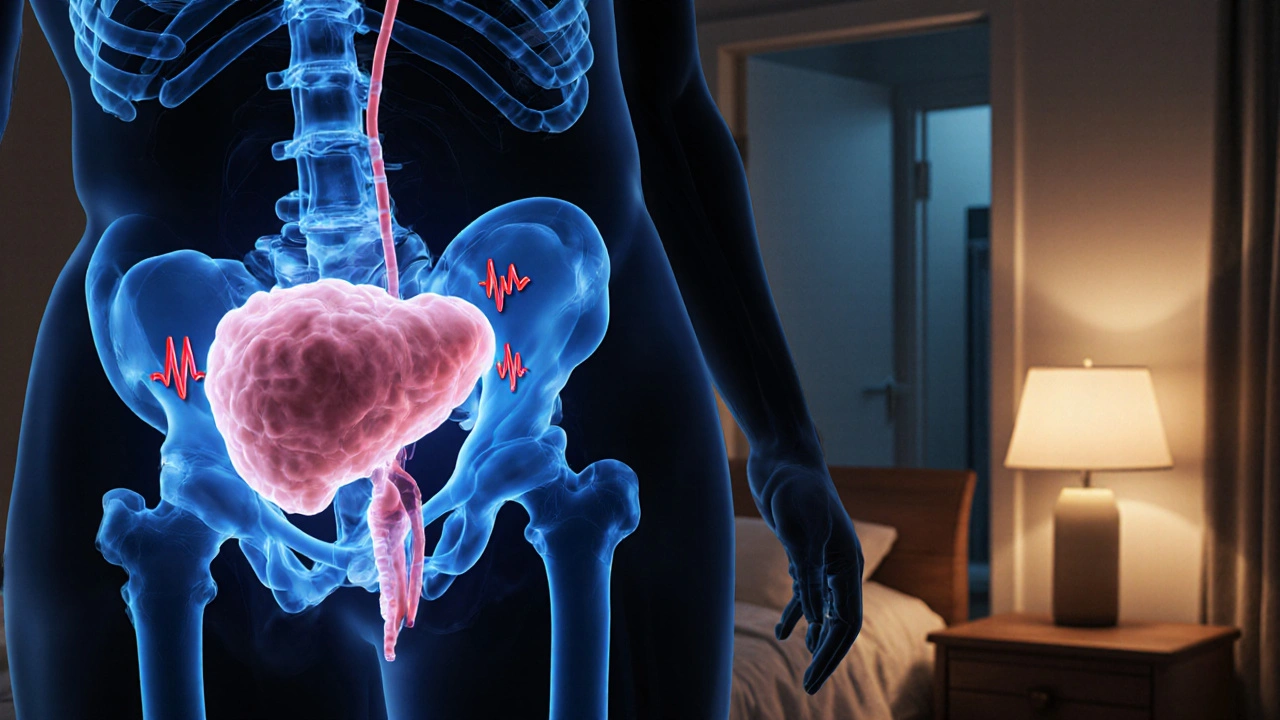BPH Medication: What You Need to Know
When dealing with BPH medication, drugs used to treat benign prostatic hyperplasia, a non‑cancerous enlargement of the prostate. Also known as benign prostatic hyperplasia drugs, it helps relieve urinary symptoms caused by the enlarged gland. Common drug families include Finasteride, a 5‑alpha‑reductase inhibitor that shrinks prostate tissue and Tamsulosin, an alpha‑blocker that relaxes the muscle fibers in the prostate neck. Together these classes cover most of the therapy choices you’ll hear about when you talk to a urologist.
Key Medication Types and How They Work
There are two main mechanisms behind BPH medication. The first, 5‑alpha‑reductase inhibition, stops the conversion of testosterone to dihydrotestosterone, a hormone that drives prostate growth. Finasteride and its cousin dutasteride fall in this group and usually need several months to show a size reduction. The second mechanism is alpha‑blockade, which targets the smooth‑muscle tone in the prostate and bladder neck. Tamsulosin, alfuzosin, and silodosin are typical agents; they act fast, often within days, improving flow speed and reducing urgency. Many doctors start patients on an alpha‑blocker for quick relief and add a 5‑alpha‑reductase inhibitor for long‑term shrinkage. This combination reflects the semantic triple: BPH medication includes finasteride and requires alpha‑blocker support for immediate symptom control.
Choosing the right regimen means balancing benefits, side‑effects, and personal health factors. Finasteride can lower PSA levels, so regular blood tests become part of the monitoring plan – a clear link: BPH medication requires PSA tracking. Common side‑effects of alpha‑blockers are dizziness or a mild drop in blood pressure, especially when standing. If you’re on other antihypertensives, your doctor will watch for additive effects. Lifestyle tweaks – fluid timing, pelvic floor exercises, and avoiding caffeine late in the day – complement the drug action and help you gauge how well the medication works. In the list below you’ll find detailed comparisons of popular BPH drugs, tips for managing side‑effects, and guidance on when to talk to your doctor about switching or adding therapy. Ready to dive deeper? Keep scrolling to see the full collection of articles that break down each option and give you practical steps to take control of your urinary health.

Temsujohn (Tamsulosin) vs Alternatives: How They Stack Up
A clear comparison of Temsujohn (tamsulosin) with other BPH drugs, covering how they work, side effects, costs, and which patients benefit most.
